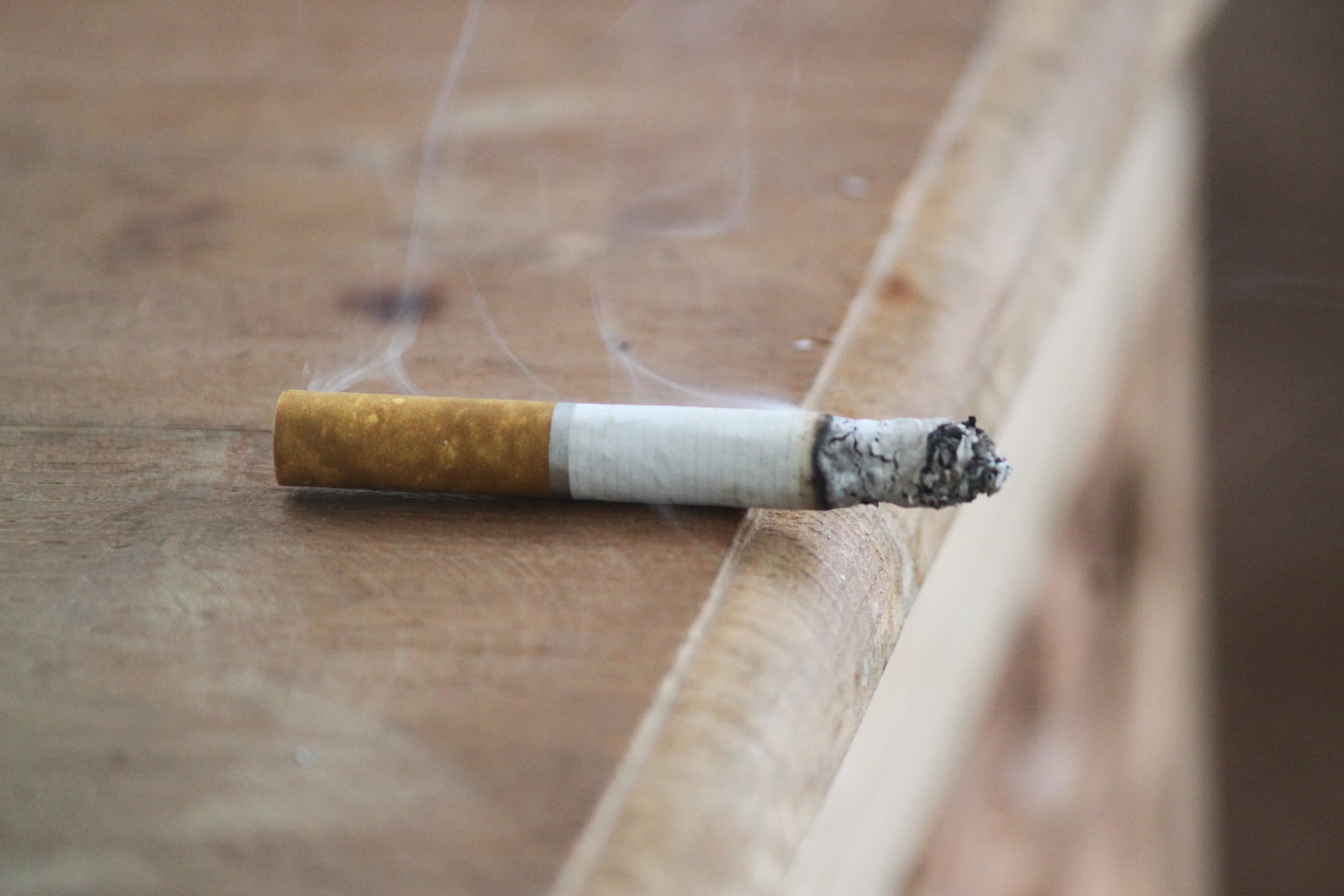The Long and Winding Road to Quitting Smoking: Joe's Story
Joe Capraro
Nov 06, 2023

I smoked my first cigarette behind Woodbridge Middle School in 1983 — from a pack my friend got from the unattended machine in the Reo Diner lobby — and my last outside the Thomas Wolfe Auditorium in Asheville, North Carolina, in 2007.
In between were countless Camels and Lucky Strikes, the occasional bummed Marlboro, and the dreaded accidental Newport. There were also more attempts to quit than I care to remember, most coming long before it was as simple as picking up some nicotine patches at the pharmacy or ordering nicotine gum online.
The dangers of tobacco are now well known, but when I came of age in the ’70s and ’80s, cigarettes were everywhere: restaurants, workplaces, and even public vending machines accessible to any 12-year-old with a few quarters.
By the late 1940s and early 1950s, the link between tobacco and lung cancer had made its way into public knowledge. Still, the proportion of Americans who smoked grew until peaking in 1964 at 42% (1). Efforts by public health groups like the American Heart and Lung Associations led to widespread tobacco bans in public spaces, starting in Berkeley, California, in 1977 (2). The percentage of Americans who smoke has dropped steadily since.
The introduction of nicotine gums and patches in the mid-1980s and early ’90s made it more convenient, if not easier, to quit. Since they became available over the counter in 1996, the ratio of adult American smokers to nonsmokers dropped from 1 in 4 to 1 in 8 (3).
Those numbers are more than mere statistics. Each tiny fraction of a percentage represents a personal struggle, full of false starts and moments of self-doubt.
My own most laughable (and unsuccessful) quitting strategy was stepping down from unfiltered to filtered Camels, then to Lights, and finally to Ultra Lights. The only thing that plan accomplished was tripling my cigarette consumption… and budget.
For a while, I turned to self-loathing; it was the hammer I used on every problem during my late teens and most of my 20s. But if you hate yourself enough, the appeal of healthy choices is fleeting, and eventually you go back to your bad habits. My self-destructive leanings kept toppling me back into that pile of Camels.
Even now, 15 years after my last cigarette, the mere thought of smoking one brings back a soothing wave over my brain. If I thought I would be physically or mentally capable of actually enjoying a cigarette right now, I’d sprint to the corner store and buy a pack.
But that enjoyment has faded in the decade and a half since my last puff. It took navigating a whole bunch of internal and external obstacles to shift my desire for nicotine from an overwhelming need to a faint and very occasional yearning.
The cold turkey approach always seemed sensible to me: an internal voice kept saying, “I just don’t want to do this any longer.” But that nagging voice was no match for the addictive power of nicotine.
Cold turkey failed me a good half dozen times, despite having what I’ve always regarded as a healthy share of willpower. These failures frustrated me even more when I was able to drop other dangerous unhealthy habits — including heavy cocaine and alcohol use — with much less of a struggle.
When I was a smoker, neither physical nor psychological medicine were as savvy about nicotine addiction as they are today. I saw my inability to drop cigarettes as both a mental and physical deficiency.
As if my internal weaknesses weren’t challenging enough, I kept putting myself in professional and social situations that would challenge the strongest of wills.
There wasn’t strong family pressure in either direction regarding my tobacco use. Two uncles were pipe smokers, and one smoked cigars regularly, but another was an executive with the American Heart Association; he more or less canceled out any potential influences the other three might have had.
But smoking was still cool in the early ’80s, and at that point I would have done anything to put distance between myself and my parents. Tobacco seemed like a safe enough place to start. I played football and golf through high school, and while only the coaches could smoke during football practices, the pack of Camels in my golf bag always emerged once my fellow smoker friends and I were out of sight.
Next came work at newspapers and radio stations, which were literally smoke-filled rooms at that point. Just as businesses started to discourage smoking in professional offices, I moved to the last bastion of cigarettes as workplace ritual: the restaurant industry.
In 2003, I bought a small pizza and sandwich place on Cape Cod. For four hectic summers, I endured 100-plus hour workweeks in a tiny, sweltering kitchen. When I started that venture, I had been tobacco-free for almost two years, and stayed so through the first year.
The second season brought a new, much busier location and a larger staff. I had never objected to my employees’ cigarette breaks, but I started to resent the fact that they got to step outside for a few minutes every hour, free from the never-ending stream of order tickets.
Eventually, I joined the smokers on their breaks, at first purely for the sunshine and, ironically, the fresh air.
It’s a short jump from standing in a circle with smokers 10 times a day, to bumming a few, to buying packs again. Cigarettes felt like a necessary respite from the endless stream of unsatisfiable New England tourists.
Far too many of them felt it was OK to scream and yell if there wasn’t enough mayo on their sandwich, and five minutes out back usually steeled us for the next inevitable eruption of entitlement.
Little comforts have always been a crutch for me in stressful times, and I managed to drop the habit when I closed the restaurant for the first two winters.
But it always came back when the tourists returned in late spring and early summer. I chose to blame them for these dips back into the cigarette pool; I was learning by then that not every failure represented a lack of character on my part, and I generally consider myself to be immune to peer pressure.
After selling the restaurant in the fall of 2006, I moved to Asheville and started working for the local stagehand union setting up equipment for arena and theater shows. Break schedules were designed around doughnuts and cigarettes, and most stagehands would admit that, as a group, they don’t serve as a great standard for mental or physical health.
In this bunch, though, were a couple of old-timers who had been up and down the mountains of addiction many times. They urged me to look at my dependence on nicotine and other drugs in a more holistic way.
I finally got therapy good enough to help me unravel the reasons why I kept making unhealthy choices, and started to see my tobacco use as part of a whole, instead of a singular unclimbable wall.
The loss of vitamin D from staying inside during breaks for the next year was definitely offset by the relief to my circulatory system: I was no longer intentionally driving up my blood pressure 15 to 25 times a day.
As my body and brain started to get healthier together, my desire for tobacco waned until it was a tiny speck in the distance. It is still there after 15 years, though, and like the urges for cocaine and alcohol, will always be.
When they surface, it’s up to me to muster whatever willpower I can summon in whatever form it takes that day. I still haven’t found a ritual as soothing as an unfiltered Camel, so half measures like Juicy Fruit and meditation will have to do.
It’s been more than 5,000 days since my last cigarette, but every time I see someone pull out a pack, it’s a challenge not to ask for one. In those moments, I remind myself it’s not just one cigarette I’d be smoking, but more likely another two dozen years’ worth.
About The Author
Joe is a writer and radio/podcast host with experience covering medicine, sports, politics, and entertainment. You can follow him on Twitter @joecapraro, listen to his weekly talk show The Sports Plus Show, or read his thoughts about television and movie happenings at Looper. He currently lives in Portland, Oregon with his medium brown dog Dexter.
Latest Articles

Jul 22, 2024
How Alcohol Impacts the Gut Microbiome
Xenia Ellenbogen

Apr 24, 2024
Naltrexone: The Benefits of Daily Use
Oar Health Editorial Team

Apr 02, 2024
Alcohol & Romantic Relationships: Reflections & Advice from Oar’s Ambassadors
Oar Health Editorial Team


